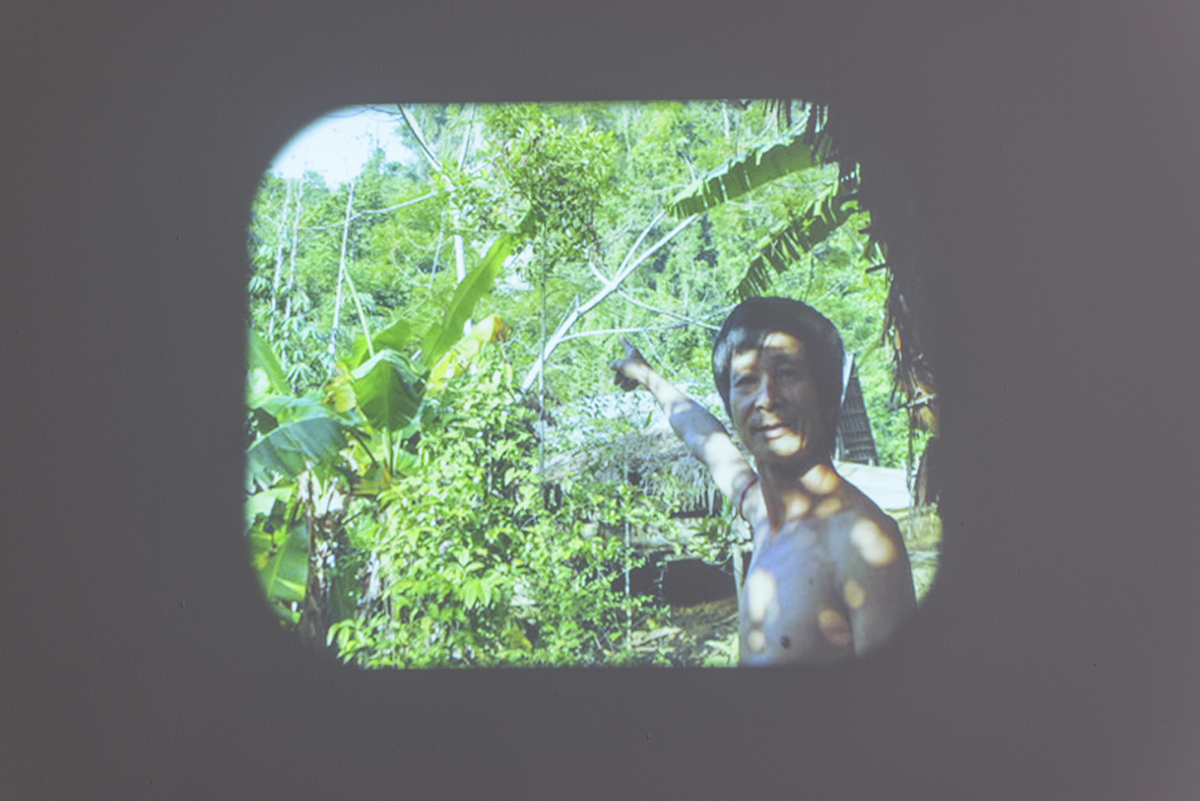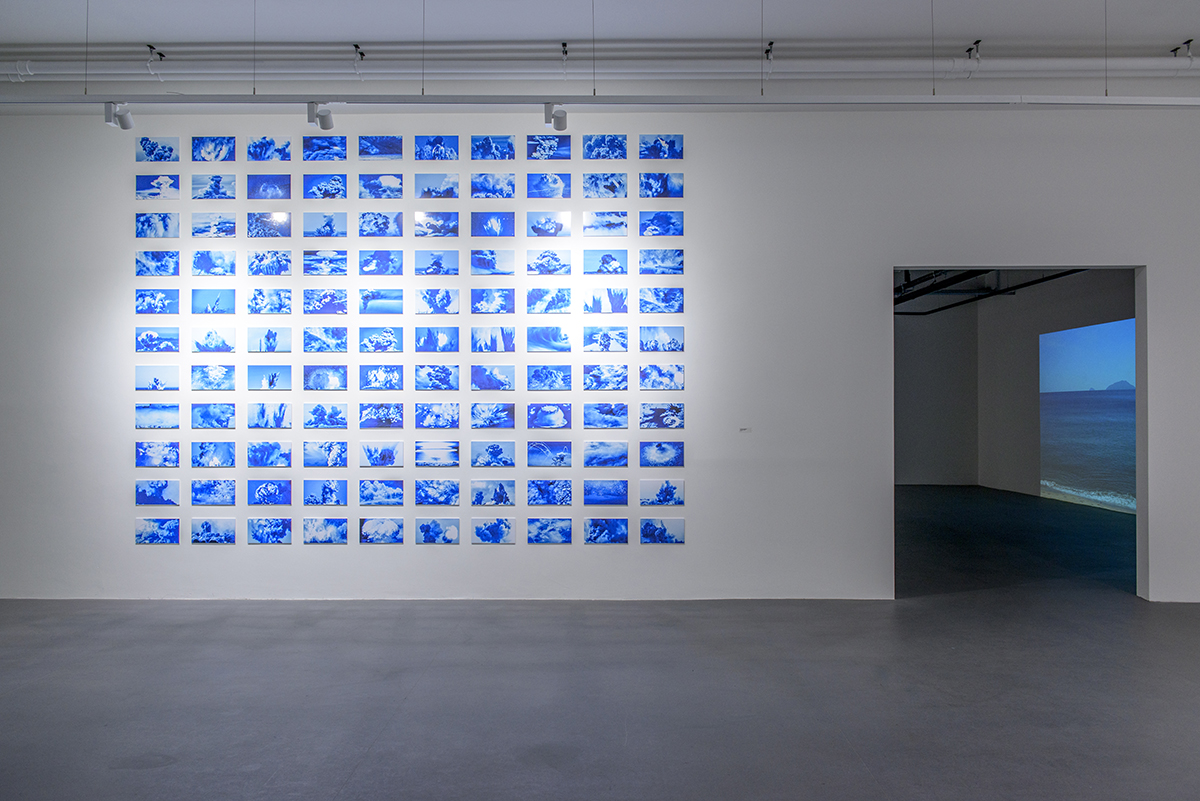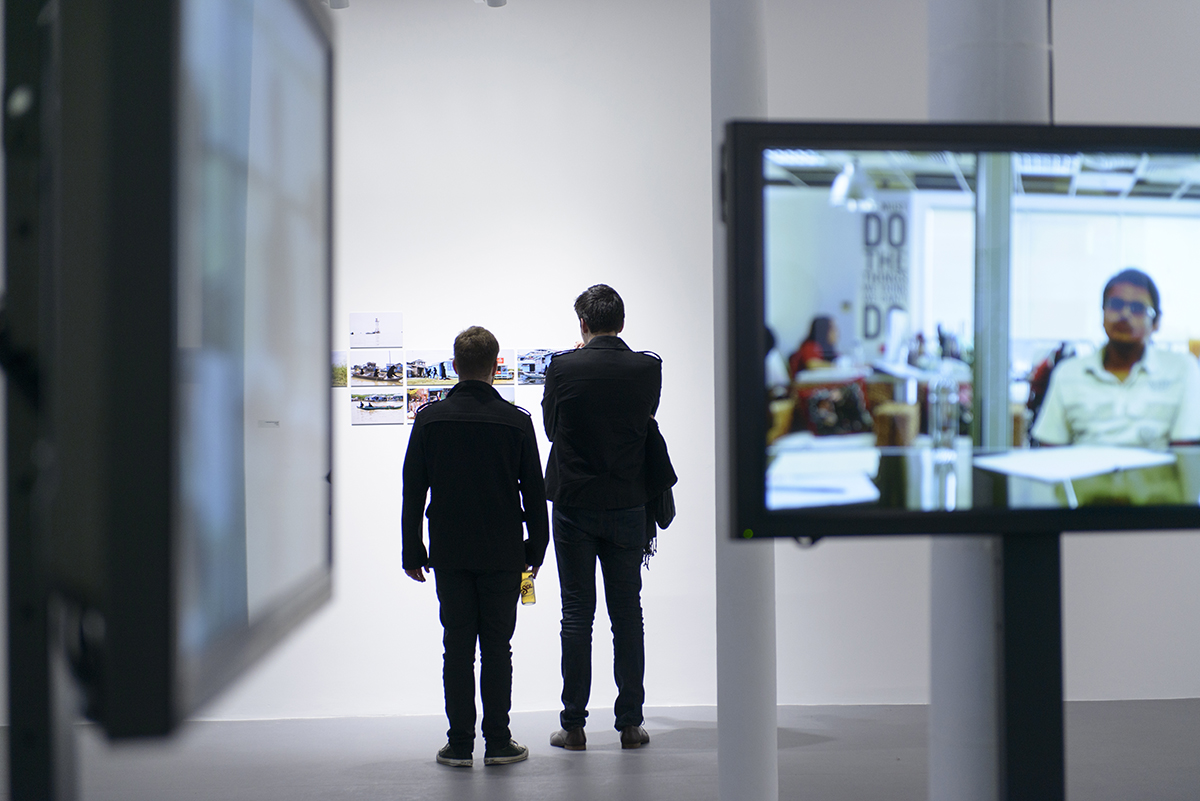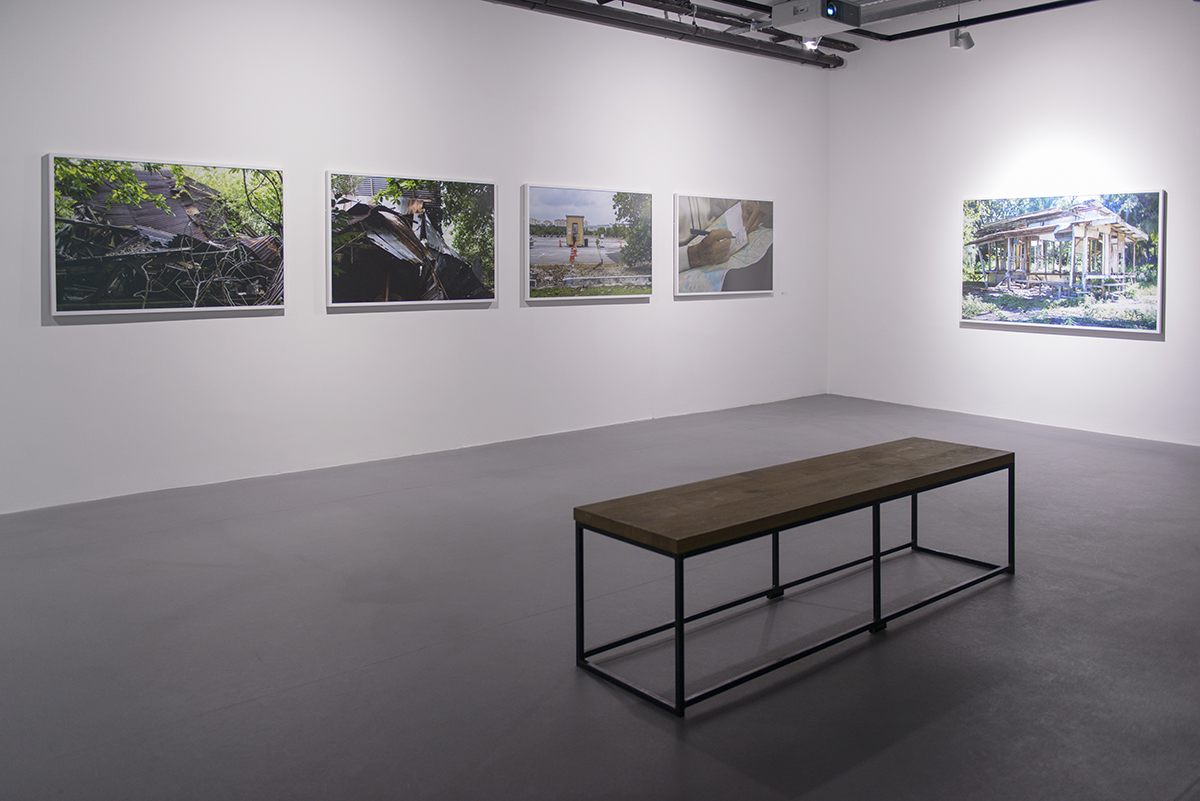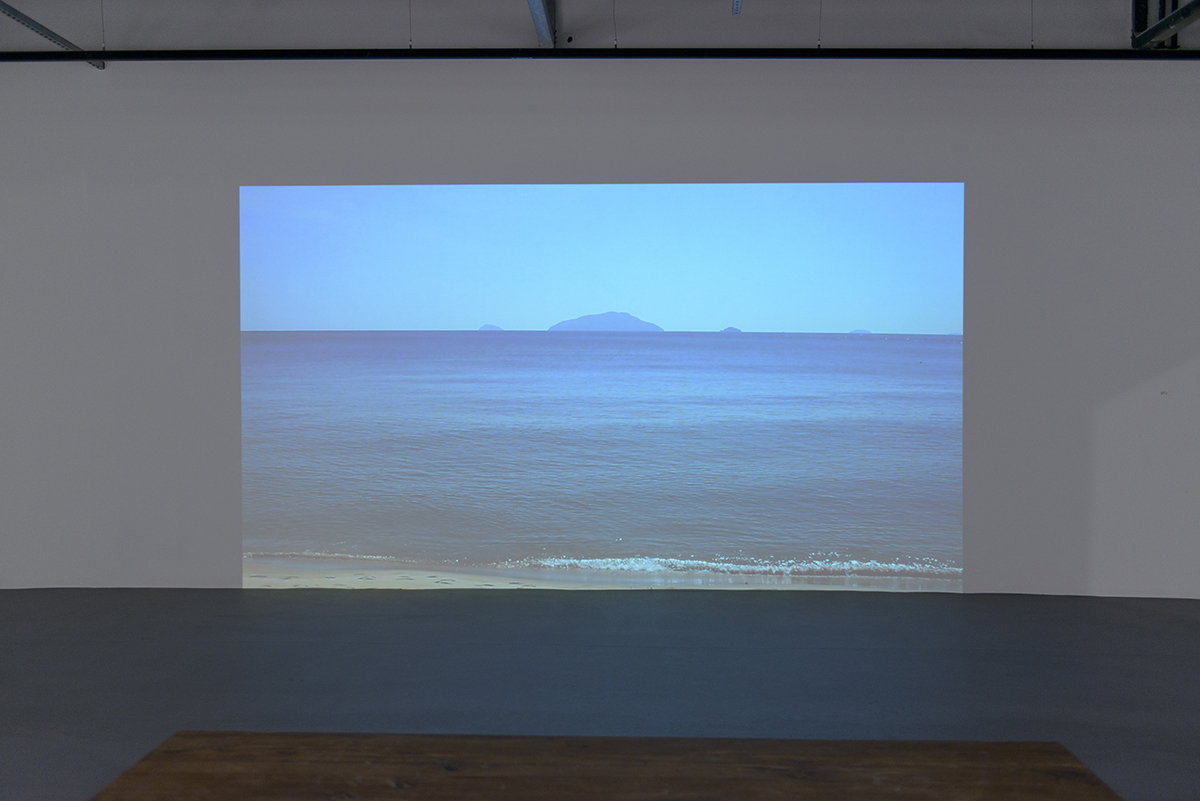Spring Watching Pavilion presents the first major exhibition of contemporary Vietnamese art in Ireland. 2015 marks the 40th anniversary of the ‘Fall of Saigon’ and the end of the Vietnam/ American war. Spring Watching Pavilion exhibits the work of 14 artists who mostly work in lens based media and participatory/socially engaged practice. The historical residues of the war through memory, personal narratives, hope and mourning are woven into a multi layered reflection on the complexity of contemporary Vietnamese life. The artists in Spring Watching Pavilion in a variety of formal and conceptual ways present a dynamic layering of temporality and looking. In directing attention to perspective and point of view the artists gathered here create both a poetic and ethical vantage point which speaks to the current complexities of the geo-political global environment.
The title of this exhibition is taken from a poem of the same name by the 19thcentury Vietnamese poet Hồ Xuân Hương.
The Propeller Group (Ho Chi Minh City and Los Angeles) Television Commercial for Communism (TVCC) (2011) Tuan Andrew Nguyen, Phunam and Matt Lucero formed The Propeller Group in 2006. The one minute advertisement shown here is the culmination of a project in which The Propeller Group asked an advertising agency “to imagine that the last five remaining communist countries hired them to create a global advertising campaign to rebrand the idea of communism.” By approaching TBWA/ Vietnam a global firm that represents multinationals such as Apple and McDonalds, The Propeller Group create a conceptual space where advertising and marketing collides with visual art in an intriguing way. TVCC continues in Gallery 1.
In the centre of the gallery The Propeller Group’s TVCC continues with the multichannel video installation which documents TBWA/Vietnam’s brainstorming sessions. TVCC allows The Propeller group to reflect the shifting relationships between communism and capitalism from the Vietnam war and its media history to the globalized spaces of contemporary Vietnam.
Tran Minh Duc ( Ho Chi Minh City). The two photographic diptychs shown here are part of a series entitled Strangers (2015). In a humorous way Tran Minh explores the transformation of Ho Chi Minh City. Asking local workers and passersby to pose in front of hoardings of large scale building projects, Tran Minh’s project reflects on the globalized fantasies mapped on the hoarding with the down to earth quotidian humour of the bemused local traders and a passerby.
Linh Phuong Nguyen (Hanoi and Frankfurt) Sanctified Clouds (2013) is an archive by the artist of over 110 images of bomb explosions taken from the web and cropped/sanctified to show only “the smoke and clouds.” In this work the artist reflects on the historical reality of six decades of continual fighting in Vietnam (1930-1980) and perhaps a younger generation’s psychic desire to leave that history behind.
Nguyen Thi Thanh Mai (Berlin and Hanoi) Shadow (2014) is part of a larger project which began while on a residency in Cambodia and explores some of the complexities of migration. Engaging with a Vietnamese fishing community near the Tonie Sap Lake in Siem Reap, her work investigates the human cost of falling between states, this community are not accepted as Cambodian Citizens nor Vietnamese and treated with suspicion on returning to Vietnam. (Her documentary video Day by Day (2015) will be screened as part of the screening programme later in the exhibition.)
Art Labor Collective (Ho Chi Minh City) have three core members, artists Phan Thao Nguyen and Truong Cong Tung (whose work will also be part of the screening programme) and curator/writer Arlette Quynh-Anh Tran. Their artist book Unconditional Belief (2014) started as a participatory project in 2012 and explores vision from an ophthalmological perspective and through the filter of belief. The project included an exhibition, workshop, public artwork at the Eye Hospital and this book.
Art Labor Collective’s current project Jarai Dew, (2015-) explores the beliefs of the Jarai People (one of 54 officially recognised ethnic minorities) in the Central Highlands of Vietnam. The Jarai a matriarchal culture combining Animist religious belief with Protestantism, believe that after death, the human will go through many stages, the final stage transforming into dew (iangôm in Jarai language) evaporating to the environment – the state of non-being – the beginning particles of new existence.
The strong cultural identity of the Jarai people, evident in their language lifestyle and relationship to the land are very different from the dominant ethnic group (Kinh). The community of 400,000 live in small villages in the forests and mountains in an area of more than 15,000 km2. In the last 15 years, the Vietnamese government’s ‘modernisation’ policy in the Central Highlands involves expanding the Kinh population in the area to develop intensive coffee, rubber and pepper plantation. Deforestation and subsequent land sale to the Kinh people turns the Jarai into employees (paid daily)of the new Kinh landowners, which is contributing to the young generation rejecting Jarai culture. Art Labor has been observing this rapid transformation in Pa Pét – a small, impoverished Jarai village, as a way to take a critical view on the modernization of Vietnam and its fragile position in relation to globalization.
Dinh Q Lê (Ho Chi Minh City) The Farmers and The Helicopters (2006) is a three-channel video installation. Here he weaves personal narratives and recollections of local farmers of the war with fragments of Hollywood and documentary film footage. This process significantly shifts perspectives around discussion of the American war as it is known in Vietnam. While considering this history of the helicopter and the childhood memories of fear recounted in the work Lê also focuses attention on the present as we meet Le Van Danh, a farmer, and Tran Quoc Hai, a self-taught mechanic. Lê in an interview with Carolee Thea (Brooklyn Rail 2010) comments:
“In 2006, I read an article in a Vietnamese newspaper about a farmer, a self-taught mechanic living in a remote farming community, who was building a life sized functional helicopter. When he began testing, the local government freaked out, disputed its safety, and seized it. A public outrage followed until engineers and scientists stepped up to help the farmers and assure its functional safety, and the government relented. I became interested because the farmers’ motive was to put the helicopter to good use, for emergency evacuations, to fertilize the fields, etc. The transformation of a war machine into a peaceful, useful object is akin to a time in Thailand, Laos, and Vietnam when wild elephants came into villages, trampling crops and killing people. Once captured and domesticated, these powerful beings were put to good use.”
Nguyen Trinh Thi (Hanoi, Berlin) Landscape Series# 1 (2013) video projection and series of postcards presents “landscape as the silent witness of history.” This work is based on Thi’s ongoing interest in ‘problematic landscapes’ which have traumatic pasts or are contested by locals against government or corporate pressures. Thi has honed in on the vernacular journalistic representational strategy usually employed to represent the specific problem, that is, getting a local to stand in the frame and point. This creates an ambiguous narrative. Here you are not told each individual story, instead the strategy of pointing into the distance (eventually ending in one character pointing at his head where he has been hit) comes under a form of creative media analysis and deconstruction. The work also alludes to a recurring problem of representation when the issue or history is not visually evident in the landscape or environment, when an image of the location is not enough. Thi’s presentation of these images as sepia toned postcards also question how different contexts shape how we may read these images. Re-deploying these journalistic images into nostalgic colonial style postcards asks us to think about the representational tropes of early colonial ethnography/documentary practices and the inherent relationship to travel and the exoticism of adventure for the colonial traveller.
Lin + Lam (Lana Lin and H. Lan Thao Lam, New York) Tomorrow I Leave video projection and photographs. Thana tourism, also known as dark or death tourism, refers to the exhibition, promotion and attraction to sites such as concentration camps, natural disasters, terror attacks, burial grounds and memorials. This particular form of “negative sightseeing” operates as part of the recreational landscape of tourism. In recent years a number of former Vietnamese refugee camps in Hong Kong and Malaysia have been marketed as tourist and recreational spots.
Lin + Lam’s work considers the transformation of these sites of trauma now entwined in the language of leisure, heritage and memorialisation. Thinking about the increasing reunion tours to former refugee camps Lin + Lam visited the island of Pulau Bidong, Malaysia. This island went from being an uninhabited island, (one square kilometre in area) to at one stage, being the most densely populated area in the world. After the end of the Vietnam war, political retributions coupled with poverty and the total destruction of the country caused hundreds of thousands of Vietnamese to flee the country. On the island of Pulau Bidong some 250,000 Vietnamese refugees were accommodated over the years. Pulau Bidong was officially closed on October 30th 1991.
The title of this installation Tomorrow I Leave (Ngay Mai Em Di) is a line from a famous song that was customarily heard over the intercom when an internee was discharged from a refugee camp, either to settle in the West or to be repatriated. It is a song of both hope and mourning, and speaks to the conflictual feelings that are called upon when one stands at the “horizon of expectation” facing an emotional and temporal junction, from the legacy of the war to an aspiration towards freedom. Lin + Lam’s Tomorrow I Leave asks what happens to memory and politics in the absence of ruins.
Ngoc Nau Ba Chua Thuong Ngan – (The Goddess of the forest and mountains 2015).In this experimental video Nau’s performance reinterprets the ritual practice of hầu đồng(“receiving incarnations of the deities”) a form of spiritual mediumship in which music is used to induce a trance. Ba Chua Thuong Ngan is the soul of the mountains. When celebrating her, people must reconstruct votive offerings of buildings in paper to repay the goddess for their exploitation of the natural resources. This work relates to Nau’s ongoing research on mining in Thái Nguyên. Her practice moves from folklore to the everyday of ordinary worker’s lives, to geological time and to current scientific research.
Download the Press Release below:
Acknowledgements

